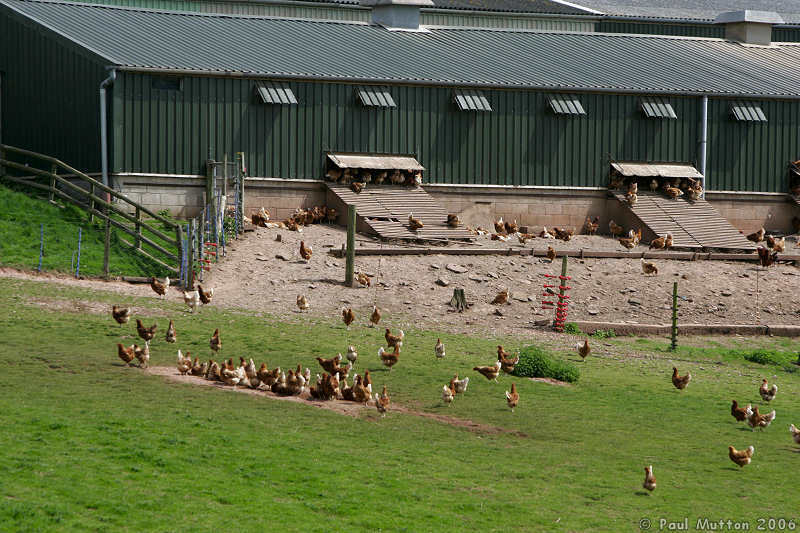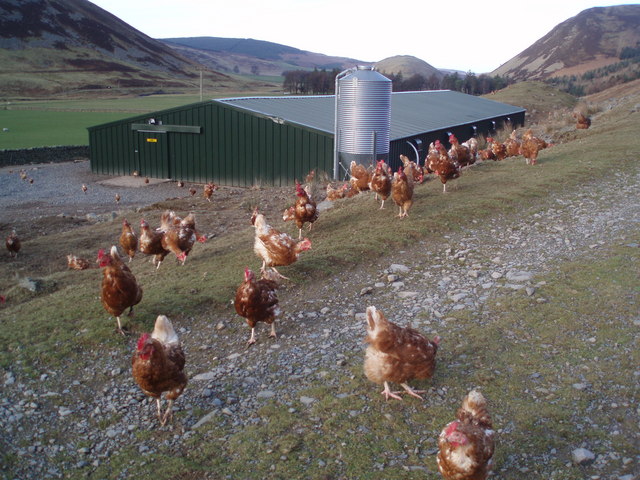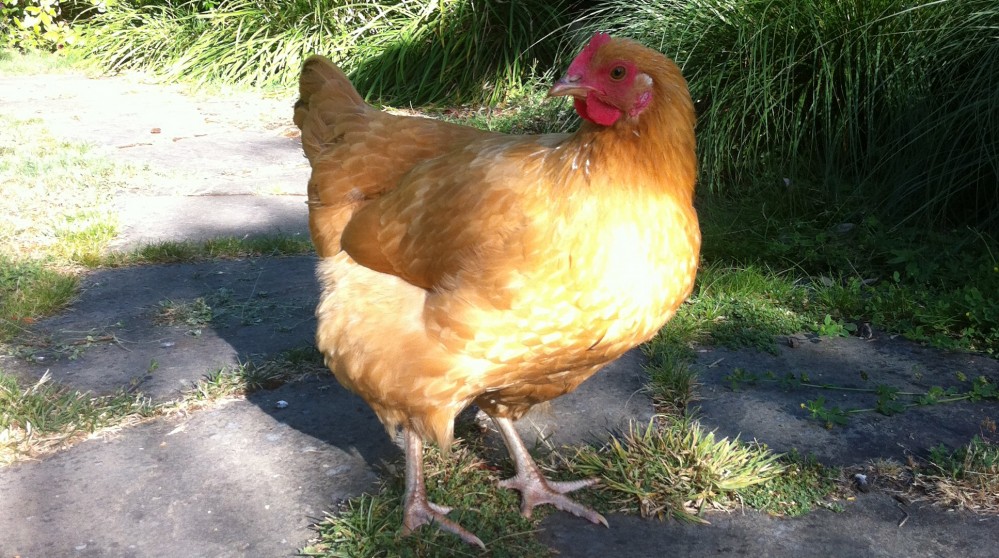In “Recommended code of practice for the care and handling of pullets, layers and spent fowl” the National Farm Animal Care Council (2003) defines free range similarly to free run except that “free-range systems provide birds with access to the outdoors when the climate permits, consequently, exposing these birds to sunlight.”

Source: Paul Mutton
http://www.fanpop.com/clubs/chicken/images/1413665/title/free-range-chicken-farm-photo
Consumer perception and actual practice may differ quite significantly in regard to free range systems. For many consumers:
the vision that ‘free-range’ most often conjures up is one of an unfenced bird, happily hunting and foraging in the grass. Because of the wholesomeness associated with the term ‘organic’, many consumers take for granted that all certified organic poultry kept for meat and eggs are kept outside on green pasture. However, when someone purchases poultry products labelled ‘free range’ or ‘organic’, many of the birds may never have actually seen the light of day or green grass during their entire life. (Sossidou et. al. 2011, p. 48)

Source: commons.wikimedia.org
This is due to the fact that hens need only have ‘access’ to the outdoors to be considered free-range in most developed countries, but whether they manage to exit through the pop-hole on the far side of a barn is another matter. While it is not clear whether this misconception is due to misleading marketing or idealistic notions of consumers, welfare aspects for these primarily, though not entirely indoor systems would be similar to free run systems.

Example of “outdoor access” in “free-range” housing. Source: The Cornucopia Institute. http://www.cornucopia.org/egg-report/scrambledeggs.pdf
In theory, free range systems allow for all natural behaviours previously addressed such as nesting, dust bathing, foraging and roosting with the added benefit of fresh air and environmental enrichment.
In an analysis of welfare in pasture based poultry systems, Sossidou et. al. (2011, p.49) define pastured poultry as “[p]oultry kept outside (as the season and daylight hours permit), utilizing a movable or stationary house for secure shelter, feeding, nesting, dust bathing and roosting with constant daytime outdoor access to fresh-growing palatable vegetation.”
In terms of welfare, the advantages of free range systems are considerable, though may not be consistent across the board, depending on location and management.
While the necessity of these behaviours have been questioned (Lindberg, 1997), a study by Marian Dawkins (1977) found that given the choice, hens have little preference between battery cages and larger pens but “simultaneous choice between a battery cage and an outside hen-run showed a clear preference for the run” whether the hen was previously accustomed to a battery cage or free-run environment.
The most obvious welfare, as well as logistics challenge for free range producers is climate. In temperate climates, proper soil drainage is key, so as to prevent large puddles and unsuitably muddy conditions that may “lead to discomfort of the bird and increases the risk of disease” (NFACC, 2003).

Source: Adam Ward
http://www.geograph.org.uk/photo/342791
Similarly, shelter from sun or adverse conditions must be provided as well as wind breaks when necessary. Extreme heat or cold weather may be altogether problematic in these outdoor systems depending on the hens’ ability to adapt and the adequacy of the shelter provided.
Free range hens are vulnerable to attacks from predators and although dogs, foxes, cougars and raccoons can possibly be kept out with fences, hawks and owls are harder to control (Deciding to Free Range your Flock, 2012).
Diseases and parasites are more prominent in free-range systems than indoor housing. Worms such as tapeworms, capillaria and ascarids as well as protozoa such as poccidiosis can cause mild to severe health problems and death (Savage, 2008).
Consequently, mortality in free range systems is often higher than conventional cage systems by at least 2-3% (Improving the Performance, 2012), and may exceed 9% (Elson, 2006).
